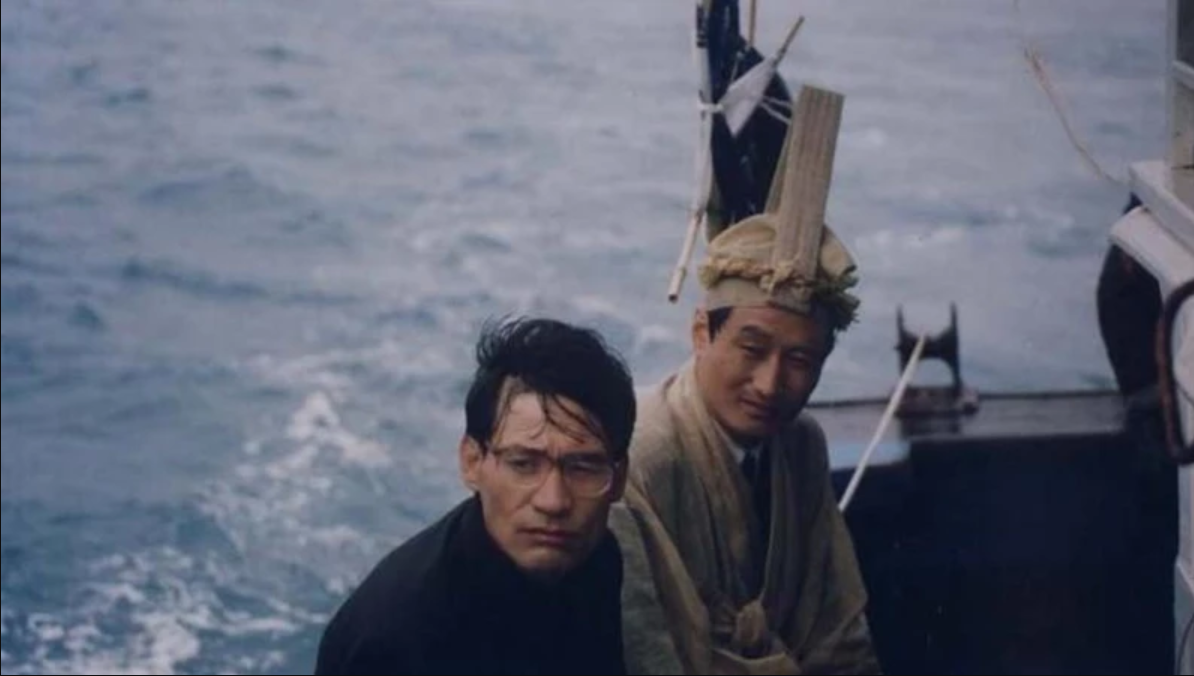“Even animals long for their birthplaces when they die ”
To The Starry Island (그 섬에 가고싶다) 1993
‘ To The Starry Island’ (그 섬에 가고싶다) made its debut on December 25, 1993, and is a significant film in the landscape of New Korean cinema. Directed by the acclaimed Park Kwang-su, who also directed the similarly thought-provoking ‘A Single Spark’ (1995), he is celebrated as a leader of the ‘New Korean Cinema’ movement that emerged in the late 1980s and early 1990s.
The film features performances by Ahn Sung-ki, who portrays Mr Kim/Kim-cheol and Moon Sung-keun, who plays Moon Jae-gu and Moon Deok-bae. The screenplay was co-written by Lee Chang-dong, who also served as the assistant director. Drawing inspiration from Im Chul-woo’s evocative novel ‘I Want to Go to the Island’, a writer noted for his subversive storytelling that highlights pressing national issues.
At the heart of the film is Kim-cheol’s journey back to Guiseong Island, a fictional locale whose name serves as a homophone for “returning to one’s hometown.” His friend Moon Jae-gu seeks to honour his deceased father by burying him in their homeland, a task complicated by the islanders’ staunch resistance. Together, they strive to persuade the locals to grant Moon Deok-bae a final resting place among them.
The film primarily takes place in the early 1950s, delving into Kim-cheol’s childhood on the island and allowing audiences to appreciate its natural beauty. Through these memories, the adult Kim-cheol finally understands the deep-seated grudge driving the islanders’ refusal to accept Moon Deok-bae’s burial.
Visually, the film offers an intimate portrayal of the islanders, presenting a close-up view of their lives and emotions before gradually expanding the lens to reveal the broader implications of the Korean War on this secluded community. Much of the runtime is spent meticulously exploring the characters, their relationships, and the intricate social norms that dictate their interactions. The community operates on a delicate balance of gossip and protection, exemplifying their collective spirit and law-making. Interesting characters emerge, primarily women, shown in various facets—from a widowed diver originally from Jeju to Ok-nim, who suffers from a mental disability and exhibits childlike qualities.
The film leans heavily into realism while incorporating subtle supernatural elements tied to shamanism without resorting to overt dramatization. Remarkably, it avoids a conventional score, featuring music only in the opening credits and the final scene. Traditional folk songs sung by characters emphasize their heritage.
At its core, ‘To The Starry Island’ presents a profound exploration of how the islanders navigate the complexities of their daily lives, managing personal triumphs and tragedies. It is not until the harrowing shadow of the Korean War descends on them, eventually reaching their shores, that their reality is altered in ways previously unimaginable. The narrative poignantly raises the question: when will this cycle of despair and conflict find resolution?
The film’s powerful conclusion is all the more impactful due to the careful development of its characters throughout the story. The thoughtful writing, enhanced by the collaboration of Park Kwang-su, Lee Chang-dong, and Im Chun-woo, creates a humanistic portrayal that resonates deeply with Korean viewers, particularly as reunification was discussed at the time.
By casting Ahn Sung-ki in dual roles as father and son, the film underscores the continuity of trauma, suggesting that the past is never truly behind us and continues to shape the present. However, ambiguity concerning the timeline may arise. Ahn Sung-ki’s portrayal of both Kims can create confusion, especially given their identical wardrobes. The relaxation of previously stringent censorship laws allowed Park to deliver a strong critical social film with a delicate humanistic approach.
